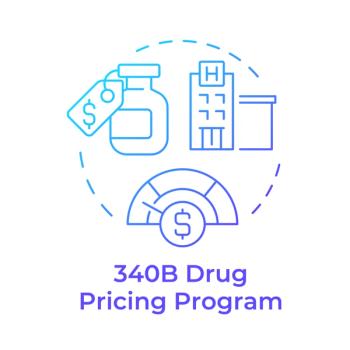
AMCP Nexus 2021: The Disparate Ways of Addressing Health Disparities
The first panel discussion of the meeting was a window into the variety of ways that health plans are working to close health disparities.
The varied ways of addressing health disparities were on full display during the first day of the
The four members of the first panel discussion of the pharmacists meeting discussed everything from how prior authorization might exacerbate disparities to comprehensive medication management to COVID-19 strategies designed to close vaccination gaps. A heavy reliance on data and data analytics and the need to foster collaboration among different parts of a healthcare organization were among the common threads of the presentation during the afternoon session.
Kaiser Permanente analysts tackled the issue by comparing white patients with Hispanic/Latinx patients and whether they failed to follow through and get a diabetes drug prescription after experiencing a prior authorization rejection for a diabetes drug. Loucks noted that utilization management edits for diabetes medications have been estimated to reduce the drug spend by $3 per member per month, so tight utilization of diabetes medication is common among health plans.
The results she shared showed that in 2019 a larger proportion of Hispanic/Latinx patients than white patients didn’t get a prescription after a prior authorization rejection for a diabetes medication (42% vs. 29%). Loucks said that Kaiser Permanente’s analysis also found that this disparity existed among patients seen by Kaiser Permanente’s integrated care system clinicians, although it was greater among those covered by the organization who get care outside the Kaiser Permanente system.
Loucks said the project also involved Kaiser Permanente’s consumer experience team conducting focus groups to help identify issues that might explain why people didn’t pursue a prescription. The focus groups identified trust issues about prescription approvals and healthcare coverage — and some misunderstandings. Loucks said one participant thought that all prescriptions were automatically rejected.
Kaiser Permanente is now in what Loucks called the “ideation/design” phase about how to respond to these findings and build trust with patients. She recommended that other organizations examine how utilization management might contribute to healthcare disparities. If such disparities are identified, she recommended working with patients to gain insight into how they might be remedied.
Khachatourian said use of data from the Dartmouth Atlas of Health Care helped MultiCare identify diabetes and chronic disease prevention as an area on which to focus. Actuaries helped build a case for large cost savings from the medications because fewer patients would be at risk of developing more serious cases of chronic kidney disease.
“You WILL see increased pharmacy costs,” was a bullet point on Khachatourian’s “lessons we learned” slide, adding that “justifying the big picture and real-world application of clinical trial data helps your cause.” She also mentioned that it was crucial to incorporate changes into the electronic medical record (EMR) systems such as Epic, so clinicians are presented the prescription of preventive medication as an option. “EMR builders are crucial,” said Khachatourian.
Still, Jai said showed
Jai also discussed a successful medication reconciliation program that engaged people while they were still in the hospital. He shared data from a matched cohort study that suggest the medication reconciliation program is very effective in reducing hospital readmissions.
Jhawar said SCAN also created a vaccine dashboard to monitor progress in vaccination rates. Routing software helped make the at-home vaccination program more efficient by designing the itineraries of EMTs who delivered the shots. “We used data to design our outreach,” she said.
SCAN had set a goal of 70% vaccination, reflecting the proportion often cited as necessary to achieve the herd immunity needed to blunt the transmission of the virus that causes COVID-19. By the end of July 2021, 71.3% of SCAN members were vaccinated, Jhawar said.
Newsletter
Get the latest industry news, event updates, and more from Managed healthcare Executive.


















































